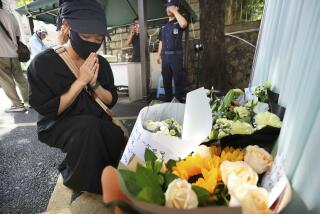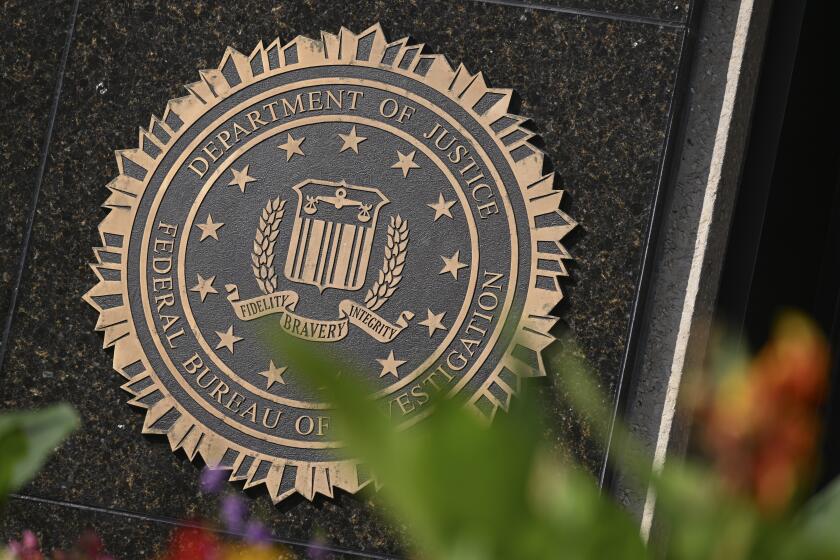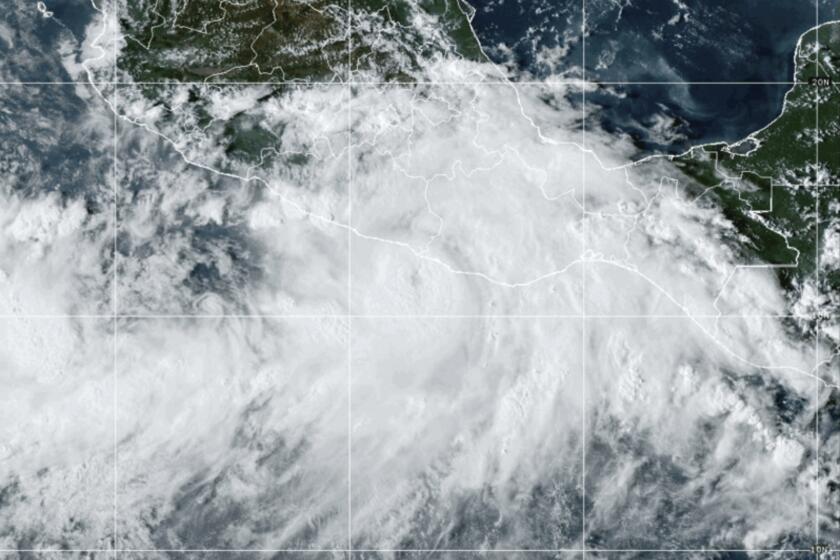‘One small step’
It wasn’t a young president’s brash promise that enabled Neil Armstrong and Buzz Aldrin to take those first halting steps on the lunar surface 40 years ago Monday. Nor was it the courage of the astronauts themselves.
The success of America’s big bet in space depended on the ability of young, unheralded engineers to build rocket engines that were both powerful enough and reliable enough to wrench the spacecraft from Earth’s jealous grasp and send it winging to the lunar surface.
The result of their work was the mammoth Saturn V, the largest and most powerful launch vehicle of its time. It was as tall as a 40-story building, with engines that gulped swimming pools worth of fuel every second. Producing 7.5 million pounds of thrust at liftoff, Saturn V was so powerful that during a test at Cape Canaveral, it rained ceiling tiles on the head of CBS news anchor Walter Cronkite, watching from four miles away.
“What set us apart was our ability to build a very big rocket to get us to the moon,” said Roger Launius, the Smithsonian Institution’s space historian, reflecting on the U.S.’ race with the then-Soviet Union to reach the moon first. “The Russians were never able to do that.”
Southern California was at the center of this huge technological leap. The rocket that would get us to the moon was composed of three parts, or stages. North American Aviation in Seal Beach built the second stage -- plus the astronauts’ command module, scaling up its Downey plant to 25,000 employees to do so. Douglas Aircraft in Huntington Beach made the third stage.
The massive engines that would power each of the stages were the responsibility of Rocketdyne in Canoga Park, then a division of North American Aviation and now managed by Pratt & Whitney. As NASA management fretted that precious time was ticking away, Rocketdyne’s engineers battled combustion problems and a dangerously faulty start-up sequence on the first-stage engines, and the failure of two second-stage engines in a key test less than a year before Apollo 11’s scheduled launch.
Those engineers were every bit the typical post-war working stiffs. Newly married and raising families, these men set up housekeeping in the fast-growing suburbs of the San Fernando Valley and threw themselves into the work of a lifetime.
“Everybody was young,” said Joe Stangeland, a structural specialist who worked on the first-stage F-1 engine. “Anyone over 30 was a veteran. I owned a $13,000 house and spent 16 hours a day working.”
Today, those engineers are part of a vanishing generation, the junior members in their 70s.
Stangeland, now 73, and two other Rocketdyne vets who played key roles in the development of the Saturn V -- Bob Biggs, who worked on the F-1, and Paul Coffman, assigned to the second-stage J-2 engine -- recently reflected on the thrill and exhaustion of the moon race.
Space race
The space race was inaugurated in May 1961, when President Kennedy announced that by the end of the decade, the U.S. would land a man on the moon and return him safely to Earth.
It was an audacious gamble. The Soviets held a clear early lead in space. In October 1957, they had launched the first piece of space flotsam, the beeping Sputnik satellite. America’s space program had gotten off to a sputtering start with the failure of its first space rocket, Vanguard, dubbed “Flopnik” by a jeering press.
The nation united behind Kennedy’s bold gamble, investing $25 billion (about $180 billion in today’s dollars) and employing 400,000 workers in 20,000 companies across the United States.
“The Apollo program had a tremendous impact on the United States,” Space Foundation Chief Executive Elliot Pulham said in a recent statement. “It built national pride and, more importantly, it influenced a whole generation of children to study hard to become scientists, engineers and astronauts.”
The Saturn V design called for five first-stage F-1s to burn kerosene for 2.5 minutes, after which five second-stage J-2 rockets, using a brand-new fuel, liquid hydrogen, would propel the spacecraft to 15,600 miles an hour and an altitude of 109 miles.
The third stage, consisting of a single J-2 engine, was to burn for 2.5 minutes, placing the craft in a parking orbit around the Earth. Several hours later, the engine would ignite again and burn for six more minutes, setting the linked command and lunar modules on course for the moon at 25,000 miles an hour.
Everything about the Saturn V was big, including its appetite. Fueling it required 89 truckloads of liquid oxygen, 28 trailer-loads of liquid hydrogen, and 27 rail cars full of kerosene.
But envisioning a monster like the Saturn V and making it work were two different things. The greatest challenge was the biggest engine, the F-1. Eighteen feet tall and weighing 9 tons, it was designed to be 10 times as powerful as any previous rocket.
“A 10% upgrade is significant in engineering terms,” said Biggs, a bearish, bespectacled man of 75. “A factor of 10 puts it in a whole new universe.”
Big problems
The sheer “bigness” brought on a series of problems, said Biggs, who went to work at Rocketdyne in 1957, fresh out of the Army. The engine was so noisy that engineers had to move it to Edwards Air Force Base in the desert for testing.
A key problem was the start-up. “They had a design for the starting sequence,” Biggs said in an interview. “I did the analysis and told them it was no good. The rocket would probably blow up.”
Biggs’ solution was to slow down the launch sequence. That gave the Saturn V its characteristic feline look, as it seemed to crouch and gather itself for five seconds after ignition before lifting off the launch pad.
The next problem -- and the biggest -- was combustion instability. The F-1’s central chamber was so large that the fuel and oxidizer mixed at different rates in different places, causing the mixture to slosh around, which set off tremors that, unless stopped, shook the engine apart. The problem lingered for two years, Biggs recalled.
D. Brainerd Holmes, then head of NASA’s Office of Manned Spaceflight, urged engineers to consider scrapping the design altogether.
As it turned out, Soviet scientists were running into the same problem on their moon rocket, the super-secret N-1. Their solution was to discard the idea of using a few large engines on the first stage, substituting 30 smaller engines. But that created problems too, such as synchronizing all those motors.
While other problems, some political, hampered the Soviet program, “it was mostly materials science” that defeated that nation’s efforts to reach the moon first, Launius said. “They just didn’t have the capability to make their engines work.”
After 15 redesigns, including changing the way the fuel and oxidizer were fed into the engine and the installation of baffles to regulate flows, Rocketdyne was finally able to tame its huge engine. “One day, it was suddenly stable,” Biggs said.
Next up was a problem with the impeller on the liquid oxygen pump. Individual blades that stirred the fuel and oxidizer kept breaking off and starting fires that burned out the pump. “We had a half-dozen blowups,” Biggs said.
“I’m not sure we ever solved that one,” he said. “We made some design changes, and the rate of failures began to go down.”
The F-1s performed flawlessly on every one of the Saturn V’s 13 manned and unmanned launches from 1967 to 1973. The vehicle sent a dozen astronauts to the surface of the moon, as well as scientific equipment and hardware, including three 10-foot-long lunar rovers.
“It was 100% reliable,” Biggs said.
Far side of the moon
Just as the engineers managed to solve the problems with the first-stage engines, trouble developed with the second-stage J-2s. Two minutes into a test flight on April 4, 1968, a little more than a year before the launch of Apollo 11, two of the J-2s shut down early. Pieces of the third stage fell off. The craft was supposed to circle the moon and return, but it never got out of Earth’s orbit.
This event caused consternation at NASA’s highest levels.
Paul Coffman headed up one of two teams assigned to figure out what went wrong -- and fast.
“There was a fair amount of pressure to resolve these issues quickly,” said Coffman, who now lives in Thousand Oaks.
The failure was traced to a coupling on a flexible fuel line, which workers replaced with stainless steel pipe. As a result, the flight of Apollo 8 in December 1968 went off as scheduled. The crew of Frank Borman, William Anders and James Lovell Jr. orbited the moon 10 times in 20 hours, becoming the first humans to see the far side of the moon.
The mission was a resounding success, at last putting to rest doubts about the Saturn V.
Lunar pioneers
Seven months later, Apollo 11 roared off the launchpad at Kennedy Space Center. Biggs was home in Canoga Park on the evening of July 20, watching the same muddy image of Armstrong’s first small step with the rest of America.
“The whole neighborhood turned out,” he said. “I remember everybody was out on the sidewalk.”
Coffman was on his way back from Northern California, where he had raced his Triumph Spitfire sports car. He stopped every hour or so at bars along the way to check on the status of the spacecraft.
“I was most of the way home before I saw that grainy image [of Armstrong] on TV. I think it was in Fresno,” Coffman said. “The feeling was just euphoria.”
The Soviet N-1 flew just four times, all unmanned. It blew up every time.
The end came in 1972, when the last test rocket disintegrated 25 miles above Earth due to the same combustion instability problems that had bedeviled the Saturn V. The Soviets quietly disbanded their moon-landing program.
Today, Biggs, Stangeland and Coffman still work in various capacities at Rocketdyne. Stangeland is a consultant. Biggs’ title is principal engineer.
They realize they are part of a departing generation of lunar pioneers, but they are not quite ready to shuffle off into history.
At 74, Coffman is at work on a new version of the J-2, a key part of the Ares 1 rocket being built to carry astronauts back to the lunar surface by 2020.
“How can you have more fun and feel more useful than to participate in the second version” of the space race? Coffman said, laughing.
--
More to Read
Sign up for Essential California
The most important California stories and recommendations in your inbox every morning.
You may occasionally receive promotional content from the Los Angeles Times.










